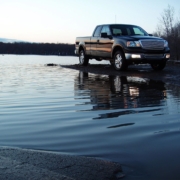In many states, uninsured coverage is optional, but remember that about 13% of drivers don’t have insurance. You’ll usually have the option of choosing the dollar limits of your coverage. For the bodily injury portion that covers your injuries, consider matching the amount of your liability coverage. Some states will give you no other option but to choose identical limits.
For example, if your limits of liability are $50,000 per person/$100,000 per accident, consider choosing the same limits for uninsured motorists coverage and underinsured motorists coverage. If you’re hit by an uninsured driver, each injured passenger(including the driver) can collect up to $50,000. If two passengers collect the full $50,000, then you’ve reached your $100,000 maximum per accident.
Your uninsured motorists property damage (UMPD) limit is a different (and much easier) story. This is the part that covers your car. You can select a limit that closely mirrors the value of your vehicle. If your car is worth $25,000, and you don’t have collision coverage, then you should consider that much in UMPD coverage.
You might also like
P: (303) 456-5047
F: (303) 284-7058
Office:
7828 Vance Dr #205
Arvada, CO 80003

